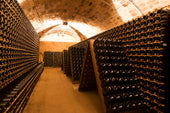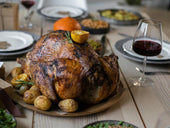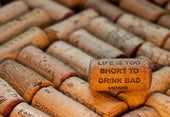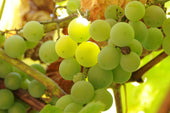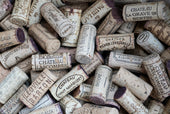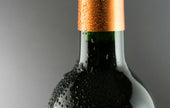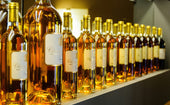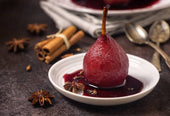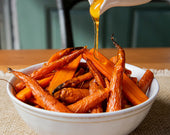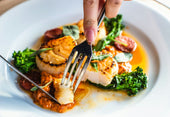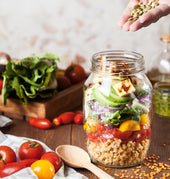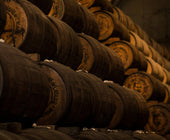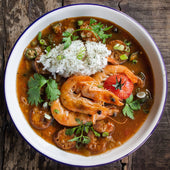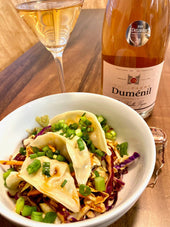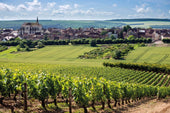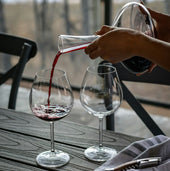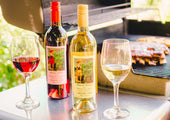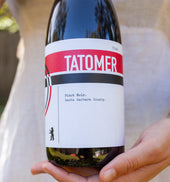
Postcard from Wine Country: The 2020 Harvest Heartbreak

As the world has been turned upside down by pandemic, the grape harvest in Napa and Sonoma has been further threatened by a series of destructive wildfires. Catastrophic events have impacted every segment of the wine industry, from vineyard workers to winery owners.
In early Summer, it was thought that coronavirus would pose the biggest threat to the 2020 harvest. That has not been the case. The August LNU Complex Fire—a series of fires resulting from a rare lightning storm—brought weeks of acrid smoke to most of Napa and Sonoma counties. Then, in late September, the fast-moving Glass Fire ripped through the northern end of the Napa Valley, damaging or destroying over 20 wineries. These disasters and their emotional toll have strained every segment of the wine industry and the delicate relationships that link them. No matter the results of 2020’s harvest, the strength of the bonds between vineyard workers, growers, winemakers, wineries and you, the consumer, will determine Napa and Sonoma’s recovery.
The Grower/Vineyard Worker Relationship: Vineyard activity normally picks up after bud break in late March. However, last spring’s arrival of skilled vineyard workers recruited from outside of the US through the H-2A program was delayed by pandemic-related border closures. Once here, the challenge became keeping workers safely distanced in and out of the vineyard. While safety protocols were applied easily enough in the vineyard, workers sharing housing and carpools challenged social distance requirements. Solutions included placing workers in a “social bubble” by house or by carpool group where exposure could be handled through testing and quarantine. Vineyard management was additionally disrupted by wildfires as evacuations further scattered the workforce. Maintaining a healthy grower/vineyard worker relationship has become increasingly vital as the safety net for vineyard workers is thin. Currently, picking continues with a diminished workforce. Unfortunately, smoke damage has left fewer vineyards to harvest.
The Winemaker/Grower Relationship: A winemaker’s relationship with growers is more than merely financial – the mutual understanding of the rhythm of the vineyard leads to success. Many of these relationships are yearslong with evergreen contracts.
For nearly two weeks in August and September, a heavy pall of smoke and ash hung over Napa and Sonoma counties, causing smoke damage to 40-70% of the crop, forcing winemakers to consider refusing tainted grapes.
Smoke damage happens when “volatile phenols” are trapped in grape skins. It can cause unpleasant “ashy” or “rubbery” flavors in finished wines, yielding unpalatable notes that are difficult to fix in the winery. Smoke impact is hard to predict based on location or varietal. Testing helps the winemaker decide whether to harvest the grapes or leave them on the vine.
In early September, winemakers began collecting grape samples to test for these smoke-related compounds. A vast number of vineyards were affected and the wine labs in Healdsburg and St. Helena were quickly overrun with requests. Test results were pushed out 3-5 weeks, in some cases rendering them useless because harvest was just days away.
The 2020 harvest continues and winemakers face tough decisions about whether to harvest the fruit they have in contract and what to do with it once it is at the winery. Meanwhile, growers face the possibility of total crop loss if not insured. Some wineries are able to offer partial payment on their contracts, others are not. How these relationships are handled will affect growers for years to come. However, grape growing is a long game. The smoke impact only affects this year’s grapes and does no long-term damage.
The Winery/Consumer Relationship: After harvest, wineries will be making some creative decisions. Some choices will be easier than others. Wineries that own their own vineyards may choose not to harvest at all and skip a year. Those that harvest will need to test repeatedly because volatile compounds continue to be released throughout fermentation and aging.
In general, white wines are less susceptible to smoke impact. After white grapes are crushed, fermentation takes place away from the skins that contain volatile compounds. For this same reason, winemakers may opt to make rosé with their red grapes.
Smoke impact is pernicious, but winemakers have some options at their disposal to address it. Wine can be filtered with reverse osmosis to remove smoky compounds. Spinning cone technology, often used to reduce alcohol content in wine, can also be applied to remove volatile phenols. These methods need to be applied carefully as they can remove the good with the bad and affect a wine’s quality.
Finished wines that don’t pass muster might be released on a lower-tiered label or sold on the bulk market. These options also allow winemakers to fulfill contracts with growers by reducing the financial risk of accepting smoke damaged fruit.
Regardless, the 2020 vintage will be smaller. Only quality wines are likely to make it through the gauntlet as the reputation of the Napa and Sonoma County growing regions are at stake.
Consumers will be the key ingredient to helping Napa and Sonoma recover from this “perfect storm.” When the 2020 releases arrive, trust the winemakers! Your continued support of your favorite wineries and winemakers will help revive the Napa and Sonoma wine country.
 Patty Lyn Tweten is a writer, graphic designer and vineyard owner. She is also a devoted fan of rosés having helped her husband make their own with the sagniée method. Instagram Linkedin
Patty Lyn Tweten is a writer, graphic designer and vineyard owner. She is also a devoted fan of rosés having helped her husband make their own with the sagniée method. Instagram Linkedin

